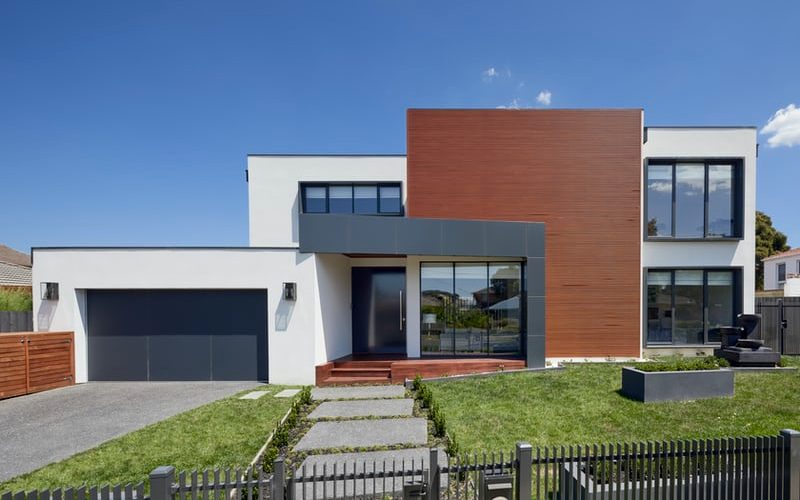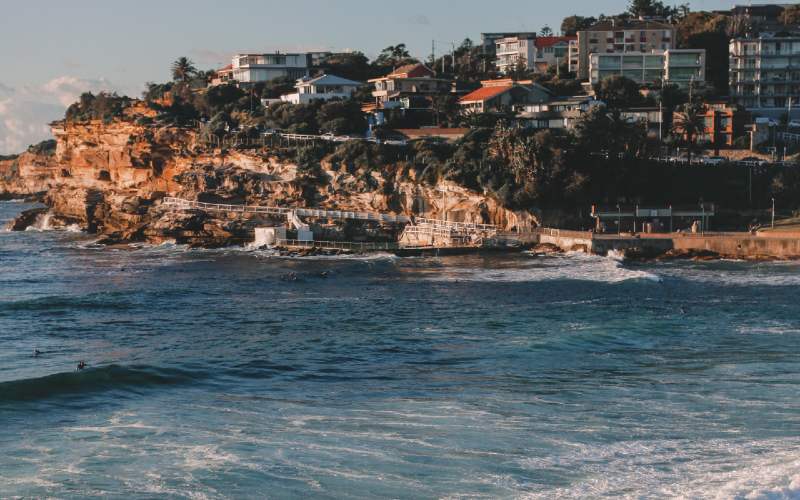Over the past two years, the Australian rental market has been dealt a blow with nationwide vacancy rates hitting their lowest point since April 2006.
This has spurred on high rental prices across the country with capital city rental prices increasing by 11% in the 12 months to March and an even higher 13.1% in regional areas.
The data published by InvestorKit analysed more than 300 regions across Australia to find those where rents will continue to increase over the next 12-24 months.
By analysing each region’s rental price trends, short-term market pressure, rental demand, and supply indicators InvestorKit found 20 regions that will see the highest rent rises.
Those include: Brisbane, Adelaide, Perth, Hobart, Canberra, Devonport, Burnie-Ulverstone, Nerang, Bundaberg, Maryborough, Buderim, Toowoomba, Queanbeyan, Lake Macquarie - East, Kiama-Shellharbour, Wagga Wagga, Barossa, Yorke Peninsula, Warrnambool, and Shepparton.
Founder and head of research at InvestorKit Arjun Paliwal clarifies what factors contribute towards a rental crisis.
“A rental crisis is often defined by vacancy rates at 1% or lower, so it’s concerning to see this continuing to worsen. We’re currently at 0.7% which is 41% lower than 12 months ago when we were at 1.2%,” Mr Paliwal said.
“Most of the 20 regions chosen in our report have vacancy rates lower than the national average, and the majority are even lower than 0.3%.”
The low nationwide vacancy rates cannot be boiled down to one simple cause with Mr Paliwal suggesting there are multiple factors to consider.
“These record-low vacancy rates are due to increasing demand and limited supply, caused by factors including greater housing demand, particularly for detached houses, due to the work from home trend and a desire for a better lifestyle,” Mr Paliwal explained.
More Generation Y Australians moving out of family homes, a decrease in property investor activity, and strong population growth in regional areas have also contributed to the increase in rental demand.
The 20 regions where rental prices are set to surge
Brisbane
Greater Brisbane’s rental vacancy rate has been on a downfall trajectory for the past five years and is currently sitting at a low 0.8%. This has forced Brisbane’s average rental price to increase by 11.9% over the last year.
However, Brisbane Lord Mayor Adrian Schrinner revealed Brisbane’s rental vacancy rates for May was 0.6% as the council pushed for extra taxes on short-term rental accommodation.
The Brisbane regions that are facing the worst rental crisis include Strathpine with a 0.11% vacancy rate, followed by Caboolture Hinterland and The Gap - Enoggera with 0.16% and 0.25% respectively.
Adelaide
The Greater Adelaide region has an extremely low vacancy rate of 0.3%. Over the past decade, rental prices have increased by 32.8%.
The city’s increasing employment opportunities backed by heavy infrastructure investments will likely force rental levels to rise.
Playford (0.07%), Onkaparinga (0.09%), and Marion (0.09%) are the three regions currently experiencing the lowest vacancy rates in the city.
Perth
Perth’s rental vacancy rate has been declining over the past five years and is currently sitting at 0.5%. This has led to rent levels rising 12.5% over the past year.
“Perth’s increasing employment opportunities, fast-growing population paired with its moderate supply levels leads us to believe that Perth’s rent level will continue to surge over the next 12-24 months,” Mr Paliwal said.
The Perth areas that are facing the worst rental crisis include Wanneroo with a 0.22% vacancy rate, followed by Armadale and Kalamunda with 0.25% and 0.26% respectively.
Hobart
Hobart has the lowest vacancy rate among Australia’s capital cities at 0.2%. This has led to a 9.9% increase in rent prices over the past year.
Rents will continue to surge in the capital city over the next 12-24 months due to rising job availability and low supply levels.
Brighton (0.10%), Hobart - North West (0.12%), and Hobart - North East (0.18%) are the three regions currently experiencing the lowest vacancy rates in the city.
Canberra
Over the past decade, Canberra’s vacancy rates have grown by 35.4% with the current vacancy rate sitting at 0.5%.
Rental prices have increased by 12.1% over the past year.
The areas with the lowest vacancy rates in Canberra are Tuggeranong with 0.04%, Weston Creek with 0.19%, and Gungahlin with 0.22%.
Devonport and Burnie-Ulverstone
Two of Tasmania’s regions on the North and North-West coast have experienced low rental vacancy rates of 0.1-0.2% since August 2020.
Devonport's rent level has increased by 15.6% over the past year while Burnie-Ulverstone has risen by 16.1%.
Nerang
Nerang’s vacancy rates have been sitting around 0.2% since late 2020.
This has led to rental prices in the Gold Coast suburb to increase by a significant 21.6% over the past year and 49.4% over the last decade.
Bundaberg
Similar to Nerang, Bundaberg’s vacancy rates have also been hovering around 0.2% since late 2019.
The region's rent level has grown 33.3% in the past decade which is higher than the national average.
Maryborough
Currently at a low 0.3%, Maryborough’s vacancy rates have been on a downward trend over the past three years.
“The region’s low rates of new housing supply (2.18%), combined with increasing employment opportunities and low vacancy rates will result in rent levels surging in Maryborough,” Mr Paliwal said.
Buderim
A suburb on the Sunshine Coast, Buderim’s rental vacancy rate has been lingering below 0.5% since August 2020 and as of March 2022, is sitting at 0.3%.
“The low vacancy rate has led to Buderim's 20.4% annual price increase in rent. While the number of for-lease listings is bouncing, the recovery is not fast enough to match the surging demand,” Mr Paliwal explained.
Toowoomba
Over the past 3 years, Toowoomba has experienced a decline in vacancy rates and is currently sitting at 0.3%.
This has contributed to a 14.3% annual increase in rent levels and a long-term growth rate of 35.6% which is 11.2% higher than the national average.
Within the next 12-24 months, rent prices will continue to rise due to the region’s investment in infrastructure and increasing employment opportunities.
Queanbeyan
The NSW suburb and Canberra-adjacent Queanbeyan is experiencing a vacancy rate of a record low 0.1%.
Rental prices have risen by 13.5% over the past year.
Rising rental demand, the region’s low unemployment rates, and a lack of new housing supply are the major contributors to rising rent levels.
Lake Macquarie - East
NSW’s coastal region of Lake Macquarie - East has a low rental vacancy level of 0.2%.
The region's low unemployment, increasing work opportunities, and relative affordability compared to Sydney has contributed to a 15.6% increase in rental prices with further growth predicted down the track.
Kiama-Shellharbour
Kiama - Shellharbour, another appealing NSW coastal area also has a low vacancy rate of 0.3%.
The low vacancy rate has played a part in the 10.8% rent level increase over the past year. As the supply level continues to decrease, rent levels are expected to be pushed further up by strong market pressure.
Wagga Wagga
Wagga Wagga’s rental vacancy rate is currently at a low 0.4%.
Mr Paliwal believes this low rate has led to the region’s 14.3% increase in rent level over the past year.
The region’s low unemployment rate, increasing work opportunities, and low supply market are considered the driving forces for surging rent levels in the next 12-24 months.
Barossa
Since 2019, Barossa’s vacancy rates have generally hovered between 0.6% and 1.5%, however they started to decline in early 2020. The current vacancy rate for the region is 0.2%.
As a result, the region’s annual increase in rent levels is now at 7.6%, and 31.5% over the past decade.
Although new house builds account for 2.58% of the total number of houses, this is not enough to balance the rising rental prices.
Yorke Peninsula
Since April 2020, the Yorke Peninsula has seen a massive decline in rental vacancy rates from 2.3% to 0.2% in March 2022.
This extremely low vacancy rate has contributed to the region's rise in rental prices by 9.3% over the past year.
Warrnambool
At the start of the pandemic, Warrnambool’s rental vacancy rate dropped drastically from 1.3% and is currently at a record low of 0.3%. This has forced rental prices to increase by 10.5% in the area.
With rental supply levels predicted to stay at this low level in the future, the heightened market pressure is likely to increase rent prices further.
Shepparton
The rental vacancy rate in Shepparton has continued to decline over the last 3 years and is currently at 0.5%.
This has led to a 9.1% increase in rental prices over the past year.
Over the past decade, the region has seen rental levels grow by 38.5% which is 14.1% higher than the national average.
No end in sight for low rental vacancy rates
Managing director of SQM Research Louis Christopher says low rental vacancy rates are expected to continue due to a number of different contributing factors.
“Rental vacancy rates continued to tighten across the country and there is nothing yet in the data that would suggest we are about to see a reprieve,” Mr Christopher said.
“The national rental crisis continues on unabated and as a result, asking rents are skyrocketing.
“Reductions in household size, short term stay listings eating into longer term lease availability and now the likely rise in immigration levels, are all factors contributing to this crisis.”
Image by WikiImages via Pixabay

Ready, Set, Buy!
Learn everything you need to know about buying property – from choosing the right property and home loan, to the purchasing process, tips to save money and more!
With bonus Q&A sheet and Crossword!



 Harry O'Sullivan
Harry O'Sullivan
 Bea Garcia
Bea Garcia
 Denise Raward
Denise Raward
 Harrison Astbury
Harrison Astbury


